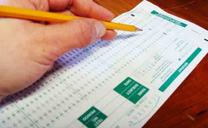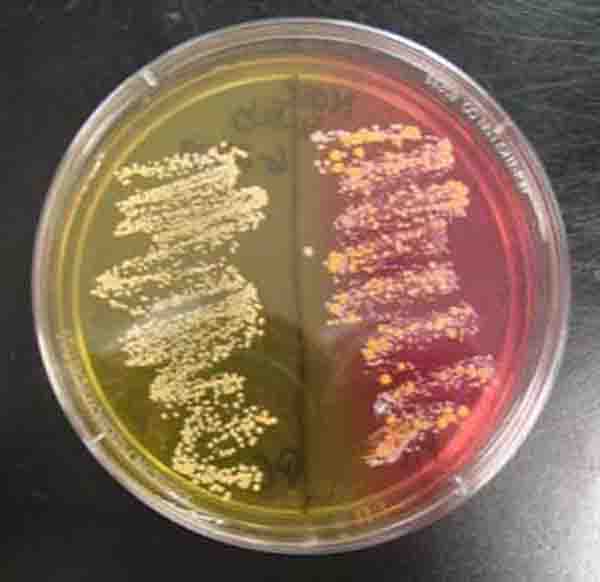 | ||||
Chemistry of Microbiology
Practice Test Questions I (Inorganic)
Virtual Microbiology Classroom of Science Prof Online
Chemistry of Micro Test Questions - Part 1
Page last updated: 2/2016
 | ||||||
SPO VIRTUAL CLASSROOMS
Chemistry of Micro
Free review questions to help students practice their understanding of
2. When bacterial cultures are grown in the lab, products of bacterial metabolism can build up making the environment too acidic or alkaline for the bacteria to thrive. What is the best thing to add to the growing medium to keep the bacteria healthy?
a. everclear b. a base c. buffer d. protein
3. The type of chemical bond that results from the sharing of electrons is:
a. ionic b. covalent c. decomposition d. hydrogen
4. The chemical bonds that link hydrogen and oxygen together in a water molecule are __________. The bonds that attract water molecules to other water molecules are __________.
a. ionic, covalent
b. ionic, hydrogen
c. covalent, hydrogen
d. hydrogen, covalent
e. cohesive, ironic
5. If a substance is composed of two or more different elements, it is considered... (choose the BEST answer)
a. a compound b. a monomer c. a molecule d. an atom
6. If the symbol for a chemical element contains two letters, like the “Na” of sodium, we know that:
a. It is a very large atom.
b. It is the most common atom that begins with the letter N.
c. It is a very small atom.
d. It is not the most common element to begin with the letter N.
7. If an atom or compound loses and electron in a chemical reaction, it has been:
a. oxidized b. reduced c. carbonized d. synthesized
8. A negatively charged ion is an anion.
a. True b. False
9. A salt is:
a. A compound that dissociates in water and releases hydrogen ions (H+).
b. An atom that dissociates in water and forms cations and anions.
c. A compound that dissociates in water and releases hydroxyl ions (OH-).
d. A compound that dissociates in water and produces cations or anions other then H+ or OH-.
10. The ____ charge of a proton is balanced by the ____ charge of a(n) ____.
a. negative, positive, electron
b. positive, neutral, neutron
c. negative, negative, electron
d.positive, negative, electron
Click here for more Chemistry of Microbiology practice test questions.
1. The bacterial species Vibrio vulnificus is known to cause food poisoning when the pH of the stomach is:
a. raised
b. lowered
c. removed
d. acidified
 | ||||||
Need Help with Chemistry?
SPO offers free PowerPoint lectures, sample test
questions, review questions and assignments on many different science topics.
Below are links to those that relate to chemistry:
The following questions are designed to help students better understand Inorganic Chemistry. All questions are based on materials that can be found on the Chemistry of Microbiology Lecture Main Page.
You have free access to a large collection of materials used in a college-level introductory microbiology course. The Virtual Microbiology Classroom provides a wide range of free educational resources including PowerPoint Lectures, Study Guides, Review Questions and Practice Test Questions.
Mannitol Salt Medium changes color from pink to yellow when manntol fermeters, such as Staph aureus are present.





